|
- Lord Rick Rowe | Create Your Badge - |
||

Custom Search
Like most towns in Utah Grafton suffered its fair share of hardships such as floods, indian raids, disease and even famine. Life within the town was a struggle to survive and due to man kinds resiliance the town was rebuilt numerous times. In 1859 the town was built for people to grow cotton as the plains in the area were very fertile by a Nathan C. Tenney. This may have been due to the fact that the Virgin River provided the vegetation with a plentiful amount of water. Despite hardships the town boomed till about the 1930's then it was abandoned. Most feld to Hurricane which is a fairly large town about 30 miles to the west. Many of you have actually seen Grafton on the big set if you remember seeing Butch Cassidy and the Sundance Kid in 1969. There were other movies filmed here to. The location is absolutely gorgeous with its green pastures and orchards. Not only is the scenery beautiful but you have Mount Zion at its door step and Mount Kinesava. Many of the residents in Grafton never did see the beauty of this location. The same beauty can be found in England. Miles Romney sent to the area by Brigham Young who was the overseer of the St. George Temple spent sometime here stating that this a lost forgotten paradise and he was right. When I visited the ghost town I lit a joint and walked around the dirt roads within the town exploring each structure while enjoying the serenity which awaited me. There are a few cemeteries near the town site I only found one which is a point of interest. The cemetery opened in 1860 and was active till about 1910. Many of the inscriptions give insight on the harsh life these pioneers experience. Their is one inscription of that states the Berry Brothers and one of their wives were all killed in indian raids. Just as starting 1865 all five children of John and Charlotte Ballard died young till 1877. The Ballard House still stands today we have photos below to prove that. Today not much remains of Grafton besides the cemetery, church and a few historic homes. The town is spread out and most of it is private property or posted. Not only is some of the area private property but their is camera surveillance in the area. This is sort of a forewarning as its not everybodies intent to visit here to preserve history or to do a documentary on the location. It is our intent however to share the history and haunts in hope that others will respect this beautiful place. At one time prior to the town dying out the church was dedicated in 1888 where school took place, dances and town socials. These people went to church and they literally were escorted off from the church in caskets only to be buried just down the road in what remains today a sandy burial ground. One resident of the area stated that everybody all 160 people composed of many families worked together...loved one another.....and fought to survive together. This was the life of an early pioneer some of us forget that its this history that has made us Americans. Grafton also had a Ward which was dissolved in 1907 and eventually transfered to the Rockville area. Just as the town boasted a post office, lumber mill, community hall, black smith, general store and many log houses. Despite that floods and indian raids caused the death of many of the residents the town was rebuilt and even till this day it survives. The real question is if the town is haunted although it is rumored to be I visited here both at night and during the day. Most of my investigations we do are fairly laid back. Anotherwards if I wanted to get EVPs here or ghost photos it would not seem out of the realms of possibility as the location has been already investigated by a few other groups. Some of them groups claim to have heard ghostly footsteps in some of the historic houses where the flooors are wood planks. Their are others who have felt the breath of the dead. I have yet to see either evidence rather these may be figments of some visitors imaginations. The reason why I say this is due to the fact that in a place like Grafton the mind tends to wander perhaps due to its secluded location or the fact that the town at night is just that creepy. Copyright By Lord Rick ~ AngelOfThyNight Dawn           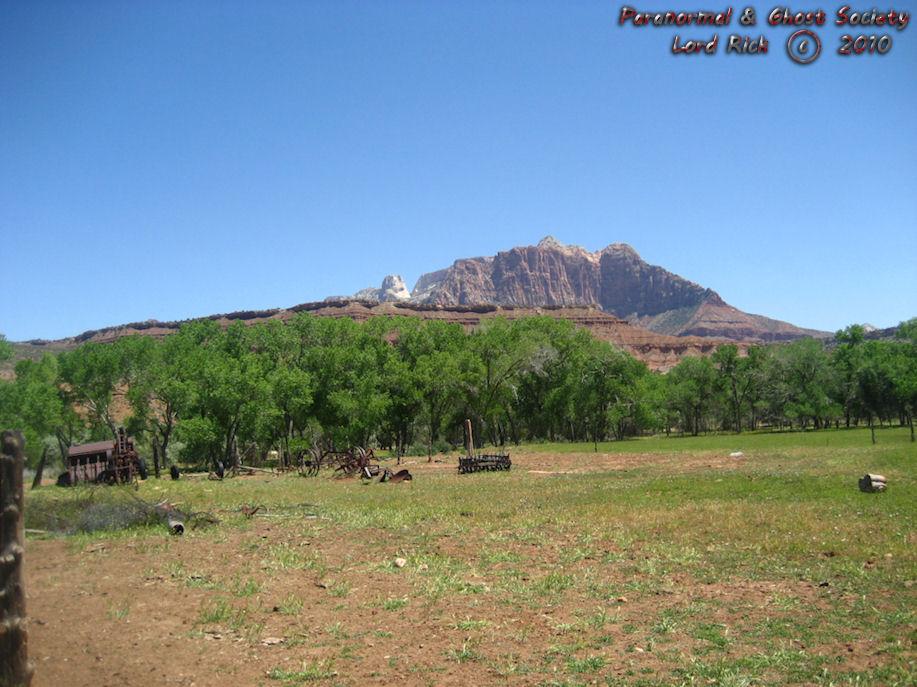            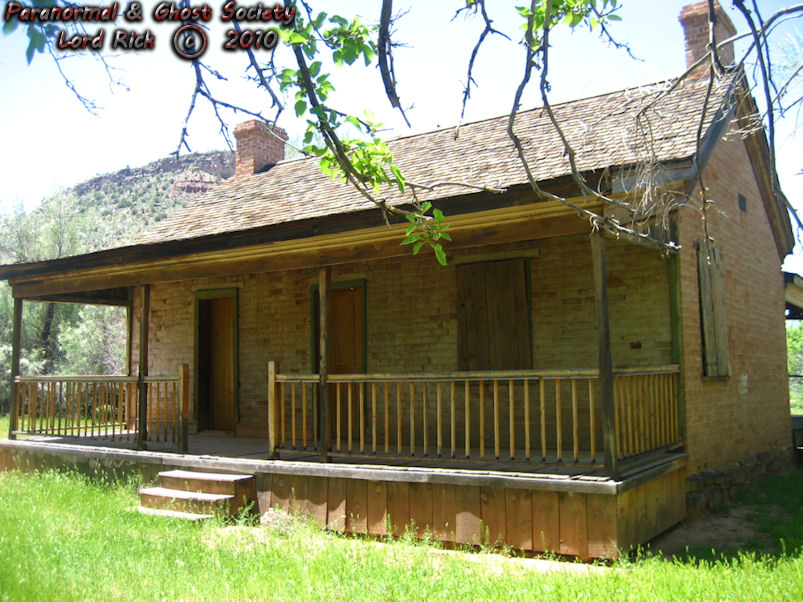       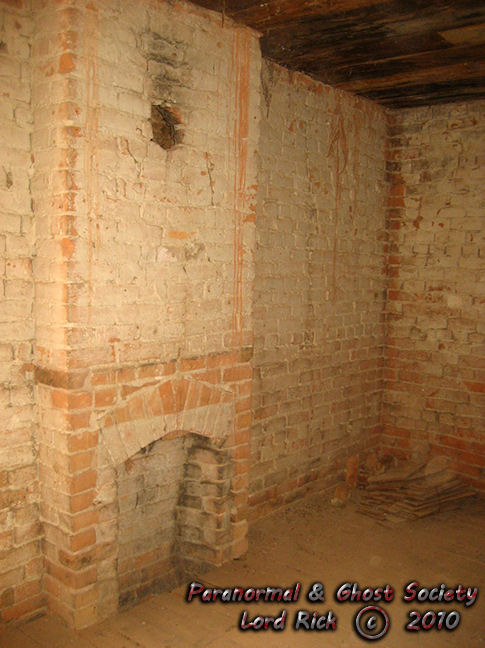          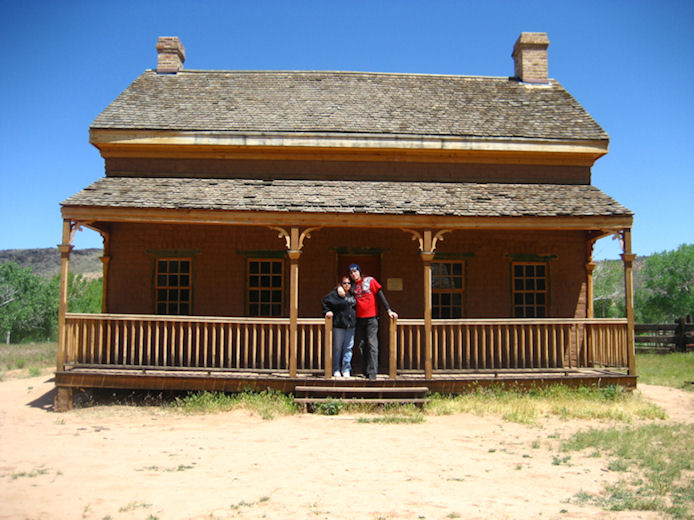         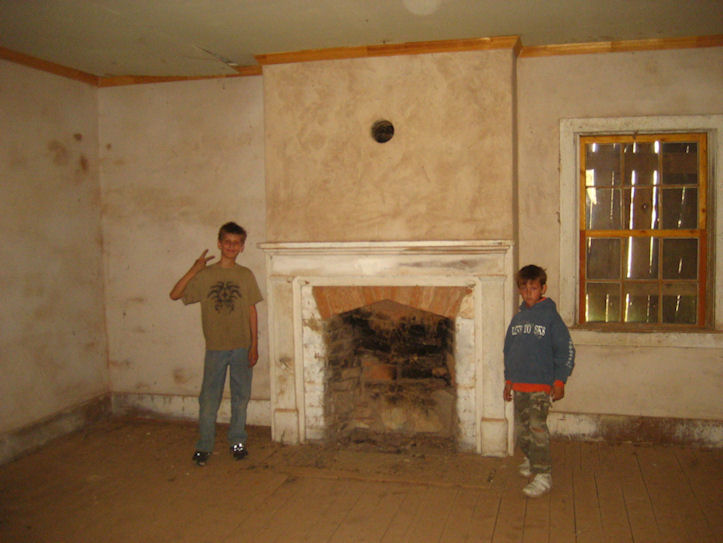    Dusk         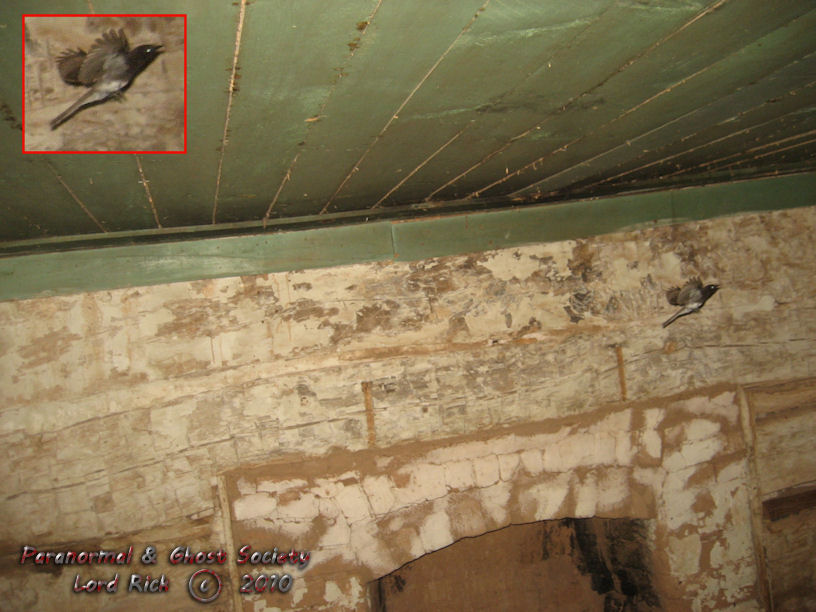  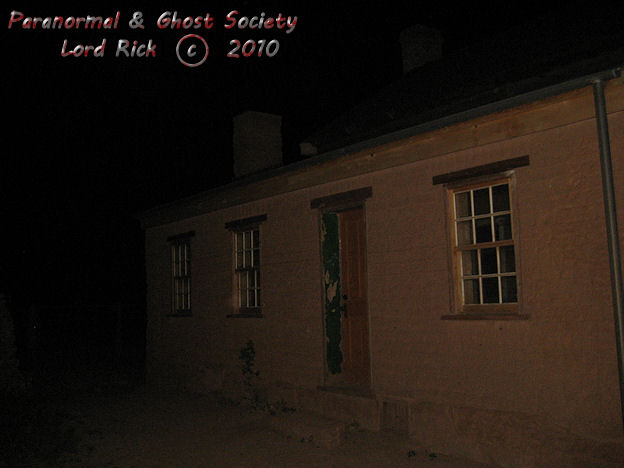              The Virgin River Doused Cotton Mission Settlers' Hopes My ghost town A vanishing personal history GRAFTON, Utah - Mygrandfather liked to dare me to walk to the cemetery at night, upthe mud road from our house, past the orchards, the looming cows,past the tumbledown barn into the open, empty fields. From there Icould almost see the mounds rising against the bluff. Grampa urgedme on. Early settlers were buried here in unmarked graves, andnearby lay the headstone of a young boy, killed by Indians. As Iturned and headed rapidly for home, I could hear Grampa chucklingin the dark. It was Grampa who had brought us toGrafton, this ghost town on the edge of Zion National Park. He wasborn and raised in Utah, and wanted us to take part, to learn tolove it as he did. So we camped out in an old adobe brick house,without running water or electricity, on a few acres of land myparents had bought. I was a little girl in diapers when we firstcame here for long holidays, driving from Los Angeles in a tatteredVW Bug. The town - a handful of abandoned buildings, apple trees,lizards and the Virgin River, carving too close to the bank -became mine. Happiness for me was waking up froma nap to eat watermelon by the irrigation ditch that ran in frontof our house. At least that's how it seems when I look at thephotograph - my eyes are still sleepy, my white shirt a makeshiftnapkin, fingerprinted with a mixture of juice and red Utah dust. Atnight we slept on cots, with an applewood fire spitting out cindersonto our canvas sleeping bags. In the mornings, frost lined thewindows, and it was so cold I was afraid to get out ofbed. But that was30 years ago. Today, Grafton as I knew it is dying. There are nowindows left in the old brick house, and the walls are scarred withgraffiti. On the mantelpiece it reads, "Albert Loves Rhonda forEternity and Mike." Deep cracks in the walls have encouragedpassers-by to help themselves to the fired bricks. And down by theriver, another empty house gapes, its front porch torn off byvandals. With its supports removed, the second story wall collapsedsoon after, exposing adobe bricks to the meltingrain. We'd heard the rumors, of course. Graftonwas falling apart, but we were far away. Now, we've finally comeback to see what's left of our land. I had noidea it was so beautiful. As a child, I had taken the place forgranted - the still warmth of the afternoons, the slow brown river,the red sandstone cliffs poking into the sky. Down the road, Ilooked for the Indian chief my grandfather had drawn on theblackboard of the schoolhouse, but he was longgone. As I stood and watched, a dozen teenagersclimbed into the open face of a deserted house nearby, up thebroken staircase to the second floor. They were laughing andshoving each other - giggling at the poetry sprayed on the plasterwalls. I felt like a tight-faced schoolmarm, injured and entitled,and I told them to get down. "Can't you guys read the sign?" Theydid not answer, and moved off. It became clear tome that I really didn't want to share this town with anyone - Ijust wanted to be left alone, to piece together the past. But myclaims on Grafton were as nothing compared to those who came beforeme. Built by Mormons in 1859, the settlement was doomed from thestart. Frequent flooding of the Virgin River washed away the cropsand destroyed irrigation ditches, making life close to impossible.At one point, the entire town was relocated upstream, but to noavail. By the 1930s, Grafton had turned into a ghost town,gathering beer bottles and tumbleweeds. I realizenow that I, too, have abandoned Grafton - to the trash, thevandals, the deterioration. Perhaps I can make amends. Sheepishly,I begin to clean up. My father and I pick up loose boards from acollapsed shed and put them in a pile. A rusty nail grazes my palm.We make slow progress, but as the debris grows higher, I feelvaguely comforted. Soon, the town will be busywith the sounds of restoration. In the past few years, a group oflocal townspeople and grassroots environmentalists has bandedtogether to preserve what's left of Grafton. They plan to stabilizethe old buildings and keep a close watch on the place to cut downon vandalism. There's already a shiny red gate blocking access tothe adobe church, and a spanking-new sign explaining what is tocome. Grafton is soon to become a place of publicpurpose. But when I consider the pamphlets to be distributed at theinformation booth, I am sick at the thought - for Grafton is nolonger mine. It has been appropriated. For mypart, I like Grafton best the way it used to be, but it is too latefor that now. Already, too many tourists, drawn by the guidebooks,come to gawk at the town, leaving behind their lunch wrappers. Iwant the Grafton of my childhood, serene and apart. A place where Icould commune with cows and watch the stinging red ants build theirhills in the dirt. I would have liked my own daughter to play heresomeday, lost in daydreams. It is almost dusknow, and the crickets buzz softly in the grass. As I stretch out onthe front porch, I hear my parents' voices inside, low andreassuring. The red mountains fade to brown in the dying light.Gawkers pass by, making tracks in the dirt road. They call out, "NoTrespassing!" and drive on by. "We own theplace," I tell them. But they probably don't believe me. And, insome way, it really isn't true. Slowly the dust resettles, and thecrickets start up again. Slightly panicked, I look around at my oldhaunts. I'd like the sun to set quietly on Grafton, and its ghosts.At the cemetery up the road, there is no more room. Jenny Attiyeh writes from Boston,Massachusetts. Copyright © 2001 HCN and JennyAttiyeh Grafton By http://www.legendsofamerica.com/ut-grafton.html After Brigham Young and his group of Emigrant pioneers settled in the valley of the Great Salt Lake in 1847, the Mormon President determined that church members would populate the region, which he hoped would become the "state” of Deseret and a place they could practice their religion without persecution. For the next 50 years, the Mormons established some 500 villages in an effort to claim the territory and secure resources for self-sufficiency. Young saw farming opportunities in the southern part of what would later become Utah, which he referred to at the time as "Dixie.” Reasoning that the warmer land, if irrigated, could produce cotton, the Mormons experimented at Santa Clara in 1854 with success. Young,
then began to send numerous families and single men, who were advised
to immediately marry,south as part of what was called the Cotton
Mission. Soon, a number of cotton farming communities sprouted up
along the upper Virgin River,
including Virgin in 1857, Wheeler/Grafton in 1859, Adventure in 1860,
Duncans Retreat and Northup in 1861, and Shunesburg, Rockville and
Springdale in 1862.
In 1859, five families from Virgin established the small settlement of Wheeler; however, it was soon destroyed by a week-long flood of the Virgin River in January, 1862. Moving about a mile upstream, they built another settlement which they named New Grafton, after Grafton, Massachusetts. Two years, later thesmall settlement was called home to some 28 families and supported about 168 people. The town boasted a number of log houses, a post office, a church, and a combination school and community hall. Each family farmed about one acre of land in narrow strips along the sides of the Virgin River, dug irrigation canals, and planted cotton, orchards, and private gardens. However, life in thefertile valley was not easy. Though the Virgin River was their very life, it was untamable and often betrayed them, leaving their dams, ditches and crops destroyed during periods of intense flooding, and at other times, leaving their crops susceptible to erosion from previous flooding. And, though they were able to grow cotton, most of their small parcels of land were given over to simple food production to sustain themselves Though the work was hard,the families also enjoyed social activities, including swimming,horseback riding, picnics, and holiday parties in addition to Sunday worship services and other religious activities. In addition to the unpredictable river, residents also experienced difficulties with the Indians during the Black Hawk War (1865-68.) In 1866, the Indian attacks became so problematic, that the people of Grafton were evacuated to nearby Rockville. Though they returned daily to work their farms, the settlement, they did not return permanently until 1868.
After another devastating flood of the Virgin River in 1868, many of
the residents gave up and left the community. When church
officials visited many of the towns along the river the following year,
in order to boost morale and reinforce the religion, they arrived to
find many of their flock had deserted.
In
1886, Grafton residents built a 2-story adobe school house, which they
also utilized as a church, and a community center where social
activities and meetings were held. The preserved structure continues to
stand today. By 1920, Grafton's population had been reduced to just three families and the local Mormon Church was discontinued the following year. The last residents of Grafton, Frank Russell and his wife, Ellen, moved away in 1944. Electricity, plumbing and other modern utilities were never introduced into Grafton homes.
Today, this historic community is
preserved by the Grafton Heritage Partnership
Project, a non-profit organization which unites government and private landowner
interests in preserving Grafton as an historic site. Grafton's preserved and restored structures are situated in a beautiful valley, surrounded by the awe-inspiring mountains and formations of Zion National Park. Unsurprisingly, the site has been utilized in three movies, including the popular 1969 film, Butch Cassidy and the Sundance Kid, starring Robert Redford and Paul Newman.
The old town site displays several original buildings including the 1886 two-story adobe school house, which is one of the most photographed ghost town structure in the American West. The site also includes the adobe home of the Alonzo Russell family, built in 1861. His son, Frank and daughter-in-law Mary Ballard Russell moved into the house in 1917 and lived in the home until they moved to St. George in 1944. They were the last residents to leave Grafton. The 1877 John Wood Home, made of brick, also stands, along with a log barn and log granary, all surrounded by a historic split rail fence. The 1907 wooden Ballard Home and barn also still stand. Another home, also owned by Alonzo Russell and built in 1879 also continues to stand. Up the road from Grafton is the 1862 Grafton Cemetery, which continued to serve residents until 1924. Grafton, located just south of Zion National Park, can be accessed by driving to Rockville, Utah on UT-9 and turning south on Bridge Lane, which crosses the Virgin River on a historic, single-track iron bridge, before the road turns westward. The pavement soon ends and climbs into the hills on the Smithsonian Butte Road, a 9-mile scenic back road to the cemetery. The town site is just beyond the cemetery.
Contact Information:
Grafton Heritage Partnership Project P.O. Box 630184 435-635-2133

Custom Search
- |
||
society ,Mib, conspiracy, time travel, spectres, Armageddon, prophets, prophecy, paranormal, ghosts, aliens, haunted houses, Cryptozoology, dimensions, apocalypse, Atlantis, curses, monsters, wild man, yeti, cemetery, stigmata, vampyre, vampires, angels, bizarre, metaphysics, Atlanta, Louisiana, Myrtle Beach, planet x, mothman, jersey devil, apparitions, werewolf, werewolves, devils, vortexes, Bermuda triangle, lycanthropes, mystery, ancient, spirits, cydonia, mythology, Charlotte, Atlanta ,Mobile, possession, possess, mailing list, parapsychology, poltergeist, evp, investigation, crop circles, Roswell, abduction, project blue book, living dinosaurs, religious miracles, NY, sightings, north Carolina, south, brown mountain, cleansing, shadowmen, beast, ogopogo, death, portals, spontaneous human combustion, zombies, Ouija boards, nostradamus, Edgar Cayce, art bell, George Nooray, Magick, Paganism, Wicca, Tennessee, Halloween, bigfoot, Sasquatch, ufo, grays, ufos, vortexes, alien, hybrids, Hauntings, demons, demonology, occult, Magick, mystics, lochness, chupacabras, equipment, Thermal, EMF, Cassadaga, energy, asteroid ,civil war, spooky, scary, adventure, ectoplasm, orbs, graveyards, demons, spirits, cults, buffalo, new York, ghost society, logo wear, equipment, books, videos, music, certification, Castles, Forts, fortean, phenomena, nonprofit ,business, investigations, SHC, EMF, ghost hunting, organization, conventions, hollow earth, paranormal & ghost Society, detector, posters, mailboxes, donate, Buffalo, X-files, Ectoplasm, Magick, spells, Wicca, paganism, holy, cross, Armageddon, NWO, Patriot, 911, September 11th, tours, Cryptid, ghost lights, dinosaurs, Florida, Fl, Daytona Beach, Jacksonville, St. Augustine's, Debary, Miami, Tampa bay, Sarasota, Pensacola, NASA, Cape Canaveral, Space Coast, space shuttle, gulf breeze, key west, Sanford, port orange, Ormond beach, New Smyrna, Orlando, Disney world, Tallahassee, Stetson university, panama city, Alabama, Georgia, Savannah, New Orleans, Cocoa Beach, Ocala, plantations, Fort Lauderdale, Melbourne, Naples, Lake Wales, grim reaper, everglades, Seminoles, big cats, Fort Myers's. Petersburg, Lakeland, Gainesville, West Palm Beach, bike week, spring break, Deland, Deltona, Orange City, weird, strange, bizarre, mysterious, rituals, skunk ape, adventure, ships, Bermuda triangle, ghost pirates, ball lightening, Elves, Fairies, Faeries, Dwarves, Mystical, Mystify, Port Orange, Edgewater, Clear Water, FSU, Abandoned, Buildings, Stories, New Age, Occult, Paganism, Tours, Ghost walks, Cydonian, Pyramids, Ancient, Dead, Soul, Spiritual, Metaphysical, Aura, Tarot, Naples, Key West, Ever Glades, Kissimmee, Sanford, Orange City, Volusia County, WNY, Asylum, Entity, Entities, Comet, Space, Ponce Inlet, Dimensions, Mist, Fog, Horror, Radio, Television, Spontaneous Human Combustion, Telepathy, Telekinesis, Magic, pubs, castles, churches, bars, tracks, exorcism, October, Books, Posters, Lake Helen, Fort Lauderdale, Psychic, Gargoyles, Crystal Skulls, Champ, Mutation, Miracles, Virgin Mary, Prehistoric, Historical, Being, Men In Black, Visitors, Mailing List, Mounds, Astronauts, Beam, Reptilian, Dolce, Specters, Bell Witch, Warlock, Shadowman, Palm Beach, Tallahassee, Holly Hill, Miami, Winter Park, Global Warming, Contrails, Chemtrails, Flagler, Homestead, Emerald Coast, Fort Myers, Fort Walton Beach, Naples, Punta Gorda, Birmingham, Decatur, Dothan, Montgomery, Tuscaloosa, Columbus, Charleston, Myrtle Beach, Sumter, Athens, Raleigh Durham, Alexandria, Lafayette, Lake Charles, Monroe, Shreveport, Bossier City, Greenville, Onslow, Piedmont Triad, Hampton Roads, Huntington - Ashland Area, Huntsville Area, Idaho Falls - Pocatello Area, Indianapolis, Iowa City, Jackson, MI, Jackson, MS, Jackson, TN, Jacksonville, Jefferson County, Johnstown - Altoona, Johnstown, Jonesboro, Joplin, Joplin - Pittsburg, Juneau, Kansas City, Knoxville, La Crosse, Lafayette Area, Lafayette, IN, Lafayette, LA, Lake Charles, Lansing - East Lansing, Lansing Metro, Laredo, Las Cruces, Las Vegas, Lawton, Lehigh Valley, Lewiston - Auburn, Lexington, Lima, Lincoln, Little Rock, Little Rock - Pine Bluff Area, Long Island, Longview, Los Angeles, Louisville, Lubbock, Lynchburg Area, Madison, Madison Metro, Mankato Area, Marquette, Memphis, Merced, Meridian, Michiana, Milwaukee, Missoula, Mobile, Mobile Pensacola Area, Monroe, Monterey Bay Area, Montgomery, Myrtle Beach Area, Naples, Nashville, National, New Orleans, New York, North Central Ohio, Northeastern Pennsylvania, Northeastern South Carolina, Northern Alabama, North Jersey, North Platte Area, Northwest Alabama, Northwest Arkansas Area, Northwest Arkansas, Oklahoma City, Omaha, Onslow County, Opelika Auburn, Orange County, Orlando, Ottumwa - Kirksville, Owensboro, Palm Springs Area, Pensacola, Peoria - Pekin, Philadelphia, Phoenix, Piedmont Triad, Pine Bluff, Pittsburgh, Portland, OR, Portland, Portsmouth Rochester, Presque Isle Area, Providence, Pueblo, Punta Gorda, Quad Cities, Quincy - Hannibal - Keokuk, Raleigh Durham, Rapid City, Redding - Chico, Redding, Red River Valley, Reno, Richland - Kennewick Area, Richmond, Rio Grande Valley Area, Roanoke, Rochester, MN, Rochester, NY, Rock County, Rockford, Sacramento, Saginaw - Bay City - Midland, Salt Lake City, San Angelo, San Antonio, San Diego, San Francisco, San Jose, Santa Barbara, Savannah Area, Scranton Wilkes Barre, Seattle, Sharon, Shenandoah Valley, Sherman - Denison, Shreveport - Bossier City, Shreveport, LA Area, Sioux City, Sioux Falls, South Bend, Southeastern North Carolina, Southern Colorado, Southern Maine, Southern Oregon, Southern Washington Area, Southern West Virginia, South Florida, Southwestern Indiana, Southwest Florida, Southwest Georgia, Spokane, Springfield Area, Springfield - Decatur - Danville, Springfield, MO, Springfield, State College, Steubenville - Weirton, St. Joseph, St. Louis, Sumter, Syracuse, Tallahassee Area, Tampa Bay, Terre Haute, Texarkana, Toledo - Findlay Metro, Toledo, Topeka Area, Tri - Cities, Tri - State Area: KY - IL - MO, Tucson - Sierra Vista, Tulare County, Tulsa, Tuscaloosa, Twin Cities, Twin Falls Area, Tyler Area, Tyler, Utica - Rome, Victoria, Waco, Washington, DC, Waterloo Cedar Falls, Watertown Area, Wausau - Rhinelander Area, West Central Ohio, West Central Wisconsin, Western Carolina - NW Georgia, Western North Carolina, West Palm Beach, West Texas, Wheeling - Steubenville Metro, Wheeling, Wichita Falls & Lawton, Wichita Falls, Wichita & Western Kansas, Williamsport, Yakima, Youngstown - Warren, Yuma, Zanesville, Altamonte Springs, Crescent City, Eustis, Hollywood, Leesburg, Jupiter, Neptune Beach, New Port Richey, Lake Wales, Lake Mary, Titusville, St Cloud, Santa Rosa, Palmetto, Vero Beach, St. Petersburg, Baton Rouge, Meridian, Jackson, Hattiesburg, Biloxi, Pascagoula, Gulfport, Seminole, Bordin Booger, Panama City, Goblyn, Ghouls, Loch Ness, Nessie, Bessie, Selkies, Mermaids, Sirens, Kraken, Dragons, Plesiosaur, Loveland Frog, Sprites, Seljord serpent, Exmoor Beast, Big Cats, Lake Normon, Lake Bala, Cressie, Alkali, Illiamna Lake Monster, Cressie, Nyami Nyami, Masbate, Ponik, Chessie, Selma, Tacoma Sea Serpent, Storsie, Cadborsaurus, Lake Utopia, Gloucester, Lake Tianchi Monster, Tessie, Mokele-Mbembe, Mongolian Death Worm, Impakta,Orang-Pendek,Owlman, Easter Island, Olifiau Monster of Flatwoods, Big Bird, Tatzelwurm, GOATMAN OF MARYLAND , BEAST OF BODMIN MOOR, Kaptar, Biabin-guli, Grendel, Ferla Mohir, Brenin Ilwyd, Ngoloko, Kikomba, Gin-sung, Yeti, Mirygdy ,Mecheny, Chinese Wildman, Nguoi Rung, SPRING HEELED JACK, Pressie, Hardin, White River, Parapsychology, Elves, Bennington Triangle, Marfa Lights, OBE, Astral, Enigma, Urban Exploration, Tunnels, Caves, Gaia, earth, healing, new age, runes, goddess, covens, Asatru, Asatruar, Druid, Druidism, Druidry, Druids, Odian, Odianism, Odians, Odin, Odinism, Odinist, Odinists, Santeria, Santerian, Santerians, Setian, Setianism, Setians, Strega, Stregheria, Wicca, Wiccans, Witch, Witchcraft, Witches, Pagan, Paganism, Neo-Pagan, Neo-Paganism,Neo-Pagans, poetry, cats, faerie, fairy, faeries, elements, occult, metaphysics, reiki, alchemy, shaman, Shaman, Shamanism, Celtic, Native American, Norse, tarot, divination, circle, fellowship, Samhain, Yule, Imbolic, Ostara, Beltane, Midsummer, Lughnassah, Mabon, crystals, nature, moon, mythology, sabbat, chants, dragons, tantra, singles, dating, willow, fire, Isis, gothic, renaissance, numerology, astrology, Rite, Rites, altar, Mysticism, brews, Deity, Talisman, Voodoo, charms, Bos, Diana, Hecate, Astarte, Kali, Fey, Pan, Loki, Totems, Spirit Guide, psychic, Angels, white, Sacred, Green, Aura, Elementals, mage, magic, Solstice, Equinox, Palm Reading, Charms, Deity, Invocations, Thermal Detector, Radiological, Ion, Video Cameras, Micro cassette Player, Centaurs, Cerebral Anoxia, Clairoleofactor, Clairvoyance, Cosmology, Cryptomnesia, Abductee, Aigypan, Alchemy, Animism, Automatic Writing, ESP, Daemon, Deja Vu, Dematerialization, Demonology, Discarnate Spirits, Disembodied, Doppelganger, Dowsing, EEG or Electro-encephalography, Empathy, Gaus, Banshee, Basilisk, Body Snatcher, Bunyip, CA, Sacramento, San Francisco, Oakland, Chico, Lake Tahoe, Jackson, California, Research, Myspace, Bands, Music, Electronics, Suvival Gear, Protection, Adult, Amazson, EBAY, MYSPACE, Gothic, Rock, New Age, Alternative, Punk, Amibent, Electronic, England, France, Paris, Australia, Trains, Mine, Radio, AngelOfThyNight, Dark, Cursed, Sin City, Canyon, Desert, Mojave, Adsense, Google, Best Buy, Flashlight, EMF, Energy, Cult, Church, Nightfall Radio, Tagged, Yahoo, Messenger, Prophet, God, Godlike, Dark Matter
|







